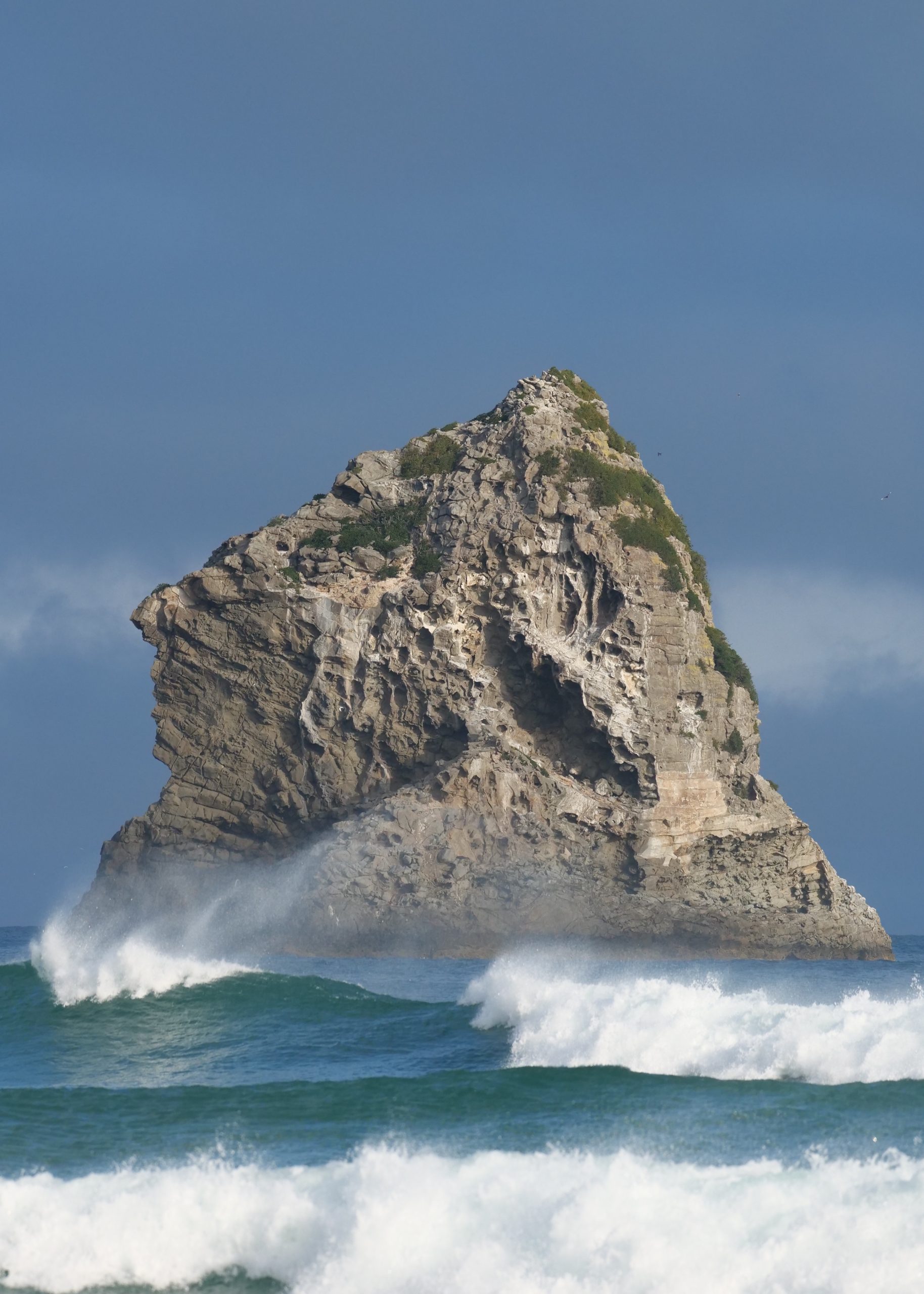These Pacific Ocean waves are breaking between Lion’s Head Rock and the shore of Sandfly Bay, on New Zealand’s Otago Peninsula.
Your hunch about the rock’s name is correct.
However, although the South Island’s sand flies are indeed fierce and nigh-unavoidable, the bay’s name owes nothing to irritating insects.
It salutes the oft-howling winds which can make a lot of sand fly at Sandfly Bay.
Immediately east of Dunedin, the Otago Peninsula has sheltered shores on its northern, Otago Harbour side, whilst its southern and eastern sides have very much wilder, ocean shores.
A few days on the Otago Peninsula would likely be very well spent, most especially if you hanker for close encounters with albatrosses, sea lions and orcas. (you almost certainly would see the first two, and you would have a “sporting” chance of seeing “the wolves of the sea”)
Brazil’s best-loved 20th century composer authored this post’s musical component.
He was Tom Jobim to his friends, but most in the English-speaking world refer to him as “Antonio Carlos Jobim”.
There are countless recorded versions of Wave, many very pleasant, but mostly rather “polite”, more “wavelet” or “ripple” than “surf this if you dare”.
In 1977, however, one of the greatest and most influential jazz pianists delivered what at least one admirer described as the “tsunami” version.
McCoy Tyner (1938-2020) opened his 1977 double-album Supertrios with this still-incredible performance, with bassist Ron Carter and drummer Tony Williams:
Tyner was also one of the great ballad players, as you can hear in a previous post.
